Nagasaki Peace Park

Beez Neez now Chy Whella
Big Bear and Pepe Millard
Sun 5 Nov 2017 23:17
|
Nagasaki Peace Park
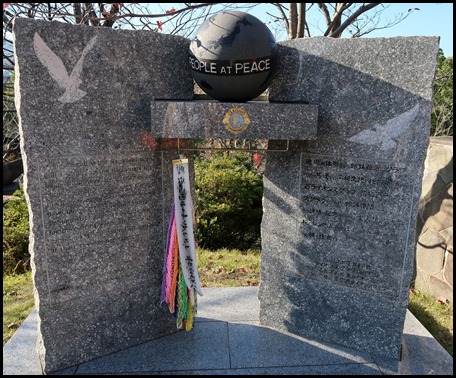 We both left the A-Bomb Museum
feeling incredibly wrung out. We left by the back entrance as the route
suggested and rode a lift down a layer, out in to the bright sunshine opposite
the People at Peace Memorial.
 A little girl holding up
a dove.
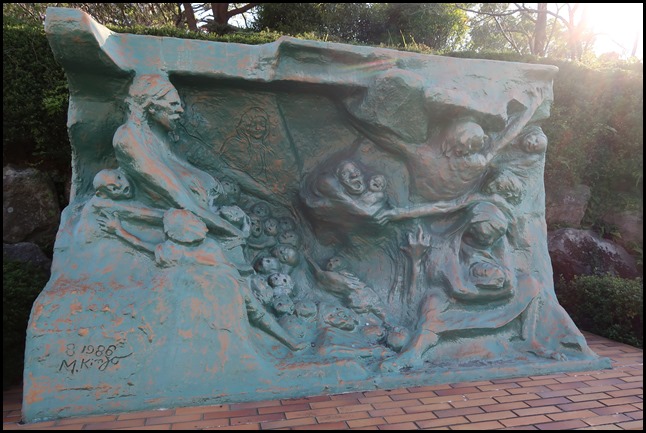 A very dramatic
piece.
The inscription reads: The women
at home prayed for victory as their men departed for the battlefields, but then
the blood of countless peoples was shed on the vast continent and the far away
islands. Finally, in 1945 as the war escalated, it brought tragedies of the
Okinawa Islands followed by the inhuman atomic bomb attacks over Hiroshima on
the 6th and Nagasaki on the 9th of August.
Ah! on that unforgettable day, in
an instantaneous blast of indescribable heat, the bodies of tens of thousands of
men and women, mothers and children were hideously torn and burnt to
death.
After more than forty years, the
agony continues even yet. Danger signs of a second nuclear war permeate our very
existence. The earth stands at the brink of total oblivion.
We must not allow any more war!
Nor the use of atomic weapons! Let us guard our precious green earth and
preserve all life of every kind.
We erect this relief, still
hearing the bursting cries of that day of each of those women long silenced in
death. Bringing together all the turmoil from the depth of their tortured hearts
and minds, we pledge ourselves never to repeat that
disaster.
August 1, 1987
 A Monument for Korean
Atomic Victims.
The inscription reads: This
monument has been dedicated to the more than 10,000 Koreans who were victims of
the atomic bombing in Nagasaki. A group of Japanese raised the funds to erect
the monument and we make the following appeal while remembering the tragic loss
Koreans were forced to live and die.
On August 22, 1910, the Japanese government put into
effect a declaration to annex Korea and to colonize the nation under the strict
and complete rule of Japan. Koreans were deprived of the liberty to live as free
citizens within their own country and their human rights were grossly neglected.
Man were drive (sic) in Japan having no recourse to live in Korea. The
total number of Koreans, most who were forcibly brought to Japan and put to
slavery, is believed to be 2,365,268 according to the Home Ministry. Of those,
approximately 70,000 were located in Nagasaki Prefecture just before the
Japanese surrender in World War II. At that time, over 31,000 Koreans lived in
and around Nagasaki and were engaged in forced labor under atrocious
conditions.
On August 9, 1945, America dropped an atomic bomb on Nagasaki
and some 20,000 Koreans experienced the blast of the bomb and were exposed to
the radiation. More than half of these people were instantly
killed.
Here we apologize to Korea and the Koreans for the
immeasurable suffering that we inflicted upon them during those tragic years;
threatening them with the sword and the gun, colonizing and annexing their
peninsula, bringing them against their will and abusing them in slavery and
finally for the catastrophic way they had to die under the atomic bomb/ We
strongly appeal for the total abolition of nuclear weapons from the face of the
earth, and we hope for the peaceful unification of the Korean
nation.
August 9, 1979
The Nagasaki Association to Protect Human Rights of
Koreans in Japan.
Wow, (other than the “Man were drive” mistake with
the translation) what an incredible thing to read and type here. The first time
we saw plastic water bottles we questioned why, unsightly.......a list of
thoughts. We were told the commonest thing that initial survivors craved was
water, so offering this water is an act of kindness. (Many people, who appeared
untouched after the bomb blast perished, some in days, weeks and some in years).
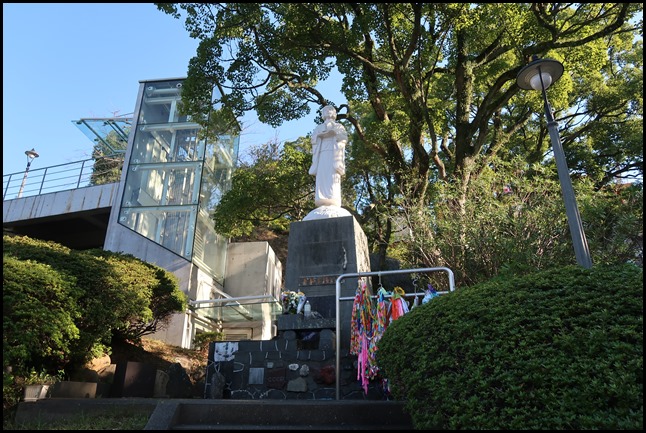 Up above us, the lift we had used and
a statue of a lady.
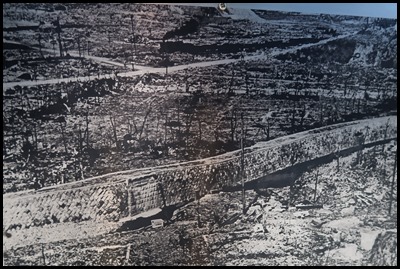  We see a picture of just after the bomb and today.
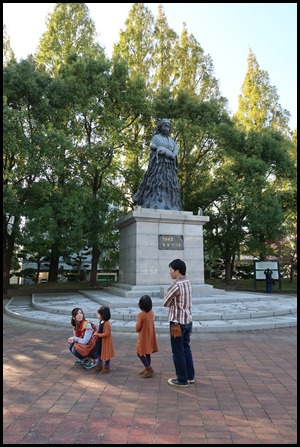  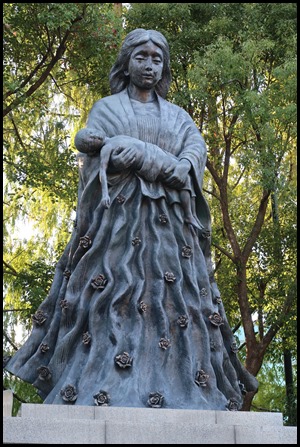 We moved closer to this memorial,
lovely to see a family feeding birds. A very powerful
memorial.
“Atomic Bombing 50th Anniversary
Commemorative Projects Monument”
When considering the present
prosperity and peace of Japan and the development of Nagasaki, we must never
forget the fact that about 70% of the victims of the Nagasaki atomic bomb, which
exploded over this city at 11:02 a.m., August 9, 1945, were children, women and
senior citizens.
Created by Nagasaki-born sculptor
Naoki Tominaga, this monument expresses the horror of the atomic bombing, prays
for the repose of the souls of the victims from whose noble sacrifice the buds
of peace grew, and – through the form of a stricken child sleeping in her
mother’s warm embrace – reaches with great motherly compassion and pleas for
eternal peace toward a prosperous Japan of the 21st century.
Embodied in the monument is the
sculptor’s reminder that the child is like Japan on the day of the atomic
bombing, while their mother represents the support provided by the countries of
the world in Japan’s efforts to build the peaceful nation that it has become
today.
On the occasion of the 50th
anniversary of the atomic bombing the hypocentre area was refurbished and
designated as a “prayer zone” a place to pray for the repose of the atomic bomb
victims, to inform the world about the horror of the atomic bombing and to
appeal for the abolition of nuclear weapons for the realization of lasting world
peace.
This monument was erected here as
the “Atomic Bombing 50th Anniversary Commemorative Projects Monument” to enhance
and strengthen the hypocenter area’s role as a “prayer zone” and a hub for world
peace.
Mayor of
Nagasaki
July 1997
   Stone
Lanterns at Shotokuji Temple
Located about 1.5 km
south-southeast of the hypocenter, Tennozan Horinin Shotokuji Temple was founded
in the year 1626, and this pair of stone lanterns was later donated by faithful
parishioners.
The atomic bomb
explosion at 11:02 a.m., August 9, 1945 crushed the main hall (made totally of
fine keyaki wood) and toppled almost all of the statues and gravestones in the
temple compound. Only these stone lanterns remained standing.
Donated to Nagasaki City as
reminders of the devastation caused by the atomic bombing, these lanterns were
erected on the present spot in February 1949.
Nagasaki City installs this
plaque to pray for the repose of the souls of the people who died here and to
ensure that this tragedy is never repeated.
March 2004.
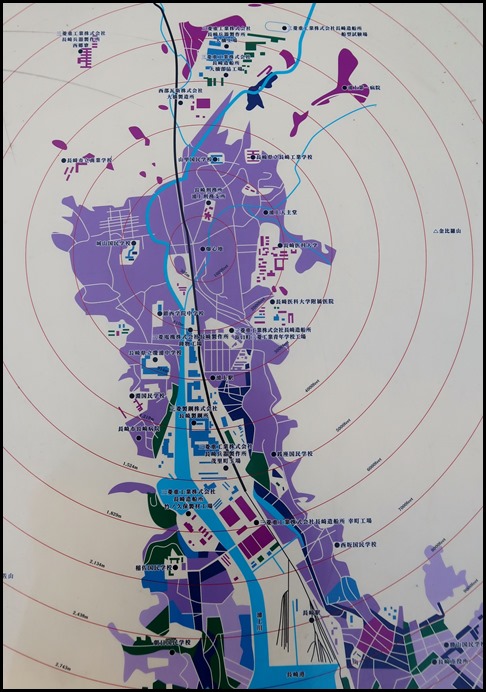   The Atomic Bombing of
Nagasaki.
Nagasaki is a port city located
on the westernmost extremity of Kyushu Island and surrounded on three sides
(east, west and north) by verdant mountains. The city grew and flourished around
a beautiful natural harbor stretching like a long fiord into the East China Sea.
It was this harbor that greeted Portuguese ships in the 16th century and for
more than 370 years until the atomic bombing watched a colorful and turbulent
history unfold.
Early in the morning on August 9,
1945 the B29 bomber “Bockscar”, loaded with an atomic bomb, lifted off the
runway at Tinian Air Base in the Mariana Islands and flew toward Kokura, an
industrial center on the northern coast of Kyushu Island and the primary target
for the world’s second atomic bombing. When the airplane reached the sky over
Kokura, however, cloud cover prevent visual sighting. After circling three
times, it changed course for the second target: Nagasaki.
Flying over this city, the
bombardier of the Bockscar spotted the sprawling buildings of the Mitsubishi
Nagasaki Arms Factory through a crack in the clouds and released the airplane’s
fatal cargo from an altitude of 30,000 ft. (about 9,000 meters). With a blinding
flash of light and an earth rending roar, the atomic bomb exploded 500 meters
above Matsuyama-machi in the northern part of Nagasaki.
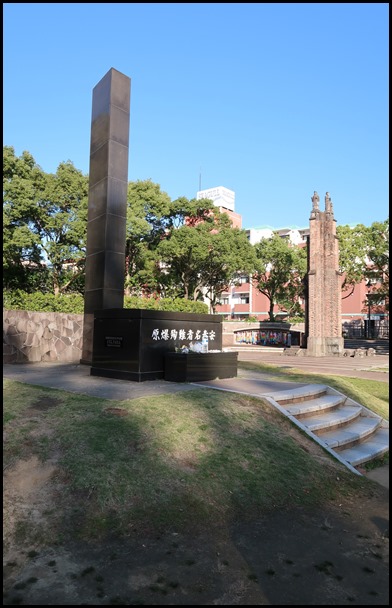 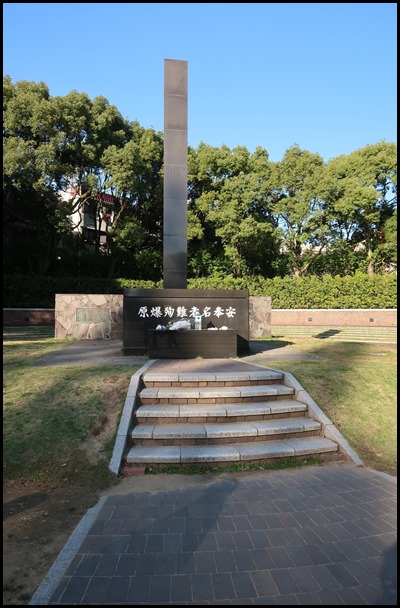 Memorial directly below
the hypocenter. (Part of cathedral to the
right).
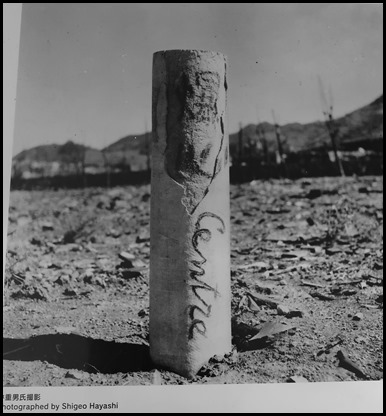  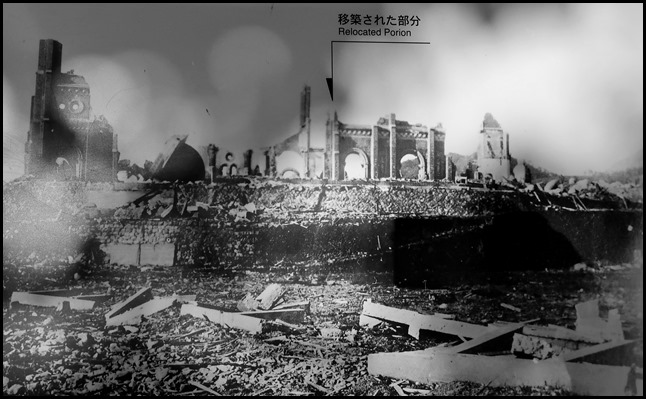 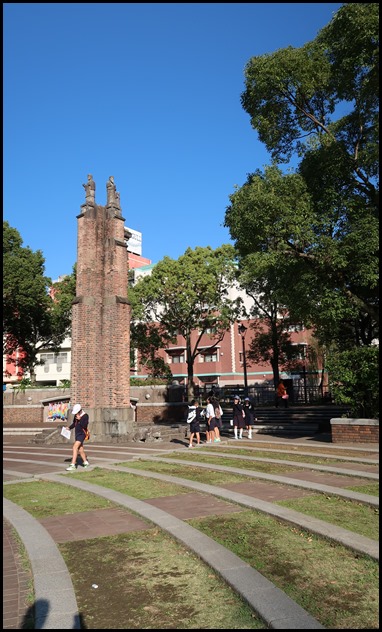 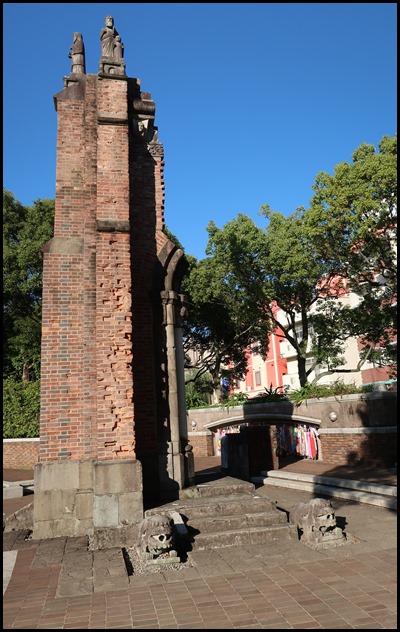 Urakami Cathedral Wall
Remnant
  We reach the red
‘You Are Here’ box.
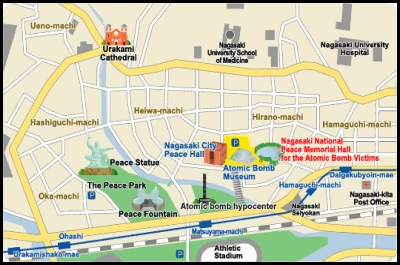 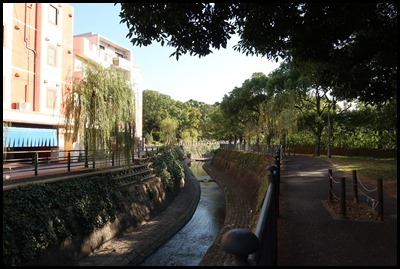 We leave this area (the black
hypocenter obelisk behind and to our left). Following the signs we will have to
follow the river, cross it, and walk up the steep
path to the main Peace Park (middle of picture above the trees).
ALL IN ALL SO MUCH TO REFLECT
UPON
VERY MOVING AND SO SAD THAT SO MANY SCHOOLS AND
HOSPITALS WERE HIT
|